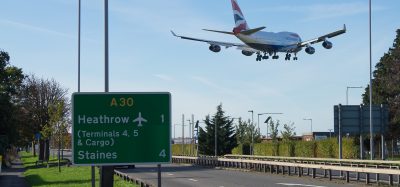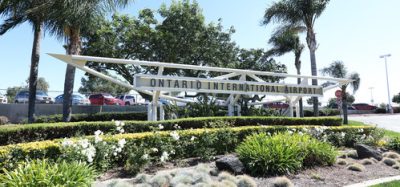Cleared for take-off?
Posted: 4 April 2013 | Paul Fraser-Bennison, Policy and Strategy Officer for Aerodrome and Air Traffic Standards, UK Civil Aviation Authority (CAA) | 2 comments
Paul Fraser-Bennison, Policy and Strategy Officer for Aerodrome and Air Traffic Standards at the UK Civil Aviation Authority (CAA) assesses the CAA’s latest winter operations trial
Airline operators require information about factors which affect their aircraft take-off and landing performance. Much of this is readily available; the runway length; the height above sea level; the air temperature and pressure on the day; and local weather conditions. However, what is difficult to provide is an indication of how well the runway surface will perform if contaminated. When precipitation falls as snow, sleet or rain heavy enough for deposits more than 3mm deep a runway is termed ‘contaminated’ and revised performance calculations have to be used.
Paul Fraser-Bennison, Policy and Strategy Officer for Aerodrome and Air Traffic Standards at the UK Civil Aviation Authority (CAA) assesses the CAA’s latest winter operations trial
Airline operators require information about factors which affect their aircraft take-off and landing performance. Much of this is readily available; the runway length; the height above sea level; the air temperature and pressure on the day; and local weather conditions. However, what is difficult to provide is an indication of how well the runway surface will perform if contaminated. When precipitation falls as snow, sleet or rain heavy enough for deposits more than 3mm deep a runway is termed ‘contaminated’ and revised performance calculations have to be used.
Following on from the severe winter weather Europe experienced in 2009/2010, the CAA set up a Winter Information Group (WIG) with a cross section of industry stakeholders. Its first action was to ensure that air crew preparing to use a runway were given the type, depth and percentage coverage in terms of snow, slush, ice or water more than 3mm deep.
The feedback from airline members involved in this group was that the work taking place in the United States under the guise of the Federal Aviation Administration Take-Off and Landing Performance Assessment – Aviation Rulemaking Committee (FAA TALPAARC) could be adapted for use in the United Kingdom. The FAA work started as a result of the Air Southwest fatal overrun at Chicago Midway in December 20051.
It was concluded that if airline operators could be provided with accurate, up-to-date information on the state of the runway, in the form of an estimated braking action, this would help with decision making by the crew and hence reduce the risk of a runway excursion.
As a result, a Runway Contamination Assessment trial was commissioned for the winter of 2010/11. Due to the limited information which this trial generated, it was expanded for winter 2011/12 to include 17 airfields throughout the UK. However, following a mild season, only a few reports were logged. Tantalisingly, what was gathered showed that the trial’s main aim could well be achieved – what was needed was more snow.
Consequently, the trial was repeated for winter 2012/13 season2, running from 1 November 2012 until 31 March 2013. The trial has three key objectives:
■ To see how the quality of data, gathered by UK aerodrome operations staff, and passed to airline operators’ crews via air traffic control (ATC), can be improved through the adoption of an enhanced assessment format, which uses phraseology to describe estimated braking action. This is obtained by assessing the runway state against a reference table using type of contaminant and its depth
■ To see how air crew understand the phraseology and whether the reports add value to the runway state report promulgated either by SNOWTAM, METAR, Runway State Group or ATIS
■ To obtain feedback from participating Air Traffic Service Units (ATSUs) concerning the management of data transmission generated by the trial and the usefulness of the data to ATSUs themselves.
The winter 2012/13 trial has been taking place at Stornoway, Inverness, Edinburgh, Glasgow Prestwick, Belfast International, City of Derry, Cardiff Wales, Newcastle, Leeds/Bradford, Manchester, Liverpool, Birmingham, Norwich, London Luton, London Stansted, London Gatwick and Exeter Airports, and any airline operator using these trial aerodromes have been able to participate in the trial.
Firstly, when operating into any UK airport where the runway is contaminated, crews can expect to be given nine pieces of information by ATC regarding the state of the runway. Each third (Touchdown Zone (TDZ), Mid-Point (MID) and Stop End (STP)) will include the contaminant type, contaminant depth and a percentage coverage reported. This helps the crew make an assessment of the suitability of the runway for use.
Secondly, if operating into any of the trial airports and such conditions exist, specialist snow teams who are constantly monitoring the situation will use a look-up table to obtain an estimated braking action-based added to the type and depth of deposits found on the runway.
This estimate will be a qualitative report based on the observed depth, extent and type of contaminant, along with the air temperature if necessary, and will be passed to crews via ATC in plain language (Good, Good/Medium, Medium, Medium/Poor or Poor).
After landing, ATC may request a verbal PIREP (Pilot Report) of the perceived braking action experienced and compare this against the current estimated braking action. To avoid RT frequency congestion, this PIREP may be requested once an aircraft has been handed over to Ground Movement Control. If the PIREP is worse than the current estimated runway friction, ATC will downgrade this to the reported state and a reassessment of the runway will be triggered. Similarly, if the PIREP is better than the current estimated runway friction, it will not be upgraded immediately; instead a reassessment of the runway will be triggered.
Friction readings generated by Continuous Friction Measuring Equipment (CFME) are no longer given in the UK due to the lack of accuracy of these readings on wet snow and slush.
The long-term goal of the trial is to simplify operations on contaminated runways. If greater accuracy and clarity can be achieved in the information passed from airfield operations staff, through ATC, to crews, it is hoped that an improved level of safety and a reduction in diversions due to winter contamination of runways will result. To achieve this, however, the trial needs to be successful, and to assess this there needs to be an increased level of feedback from all participants.
As the 2012/2013 trial commenced it became clear that aircraft have been landing on contaminated runways aided by estimated braking action phraseology. The amount of winter weather combined with the breadth of coverage bodes well for some interesting investigations this spring. It is hoped that the trial will be a success and that a report can be published, thereby contributing to international efforts to reduce risk and improve reliability in times of winter travel disruption.
In addition to providing verbal reports, the CAA is encouraging written feedback from flight crews, and a questionnaire can be found on the website: www.caa.co.uk/srg2007. The completed form can be submitted electronically via company flight operations departments – by email to: [email protected] or via fax to: +44 (0) 1293 573971.
References
1. NTSB report into Air Southwest overrun Chicago Midway 2005 http://www.ntsb.gov/doclib/reports/2007/ AAR0706.pdf
2. CAA WIG UK Winter Runway Assessment Trial 2012/2013 Trial Plan http://www.caa.co.uk/docs/2397/ 20121031UKWinterRunwayAssessmentTrial20122013Trial Plan.pdf
Biography
Paul Fraser-Bennison joined the CAA Safety Regulation Group in 2004 following 13 years at Manchester Airport working Engineering and Operations. He was a member of the Runway 2 Team and latterly the Airfield Operations Safety and Standards Manager. Paul is Policy and Strategy Officer in the CAA’s Aerodrome and Air Traffic Standards Department and has special responsibilities for technology, including AGL and Runway Surface Friction Characteristics. He is a member of the ICAO Friction Task Force and the Visual Aids Working Group.
Are you ready to meet the expectations of Gen Z travellers? Join our virtual panel to discover how airports can engage the next generation of passengers.
16 Oct 2025 | 14:00 PM BST | FREE Virtual Panel Discussion
Join us for this interactive session where industry leaders will explore how airports are adapting to the needs and values of Gen Z, the first truly digital-native, socially conscious, and tech-savvy generation.
What You’ll Learn:
- What drives Gen Z travel decisions, and how to respond
- How to harness digital tools, social media, and mobile-first strategies
- How sustainability, inclusivity, and personalised experiences shape Gen Z’s airport expectations
- Real-world examples from leading airports that are successfully engaging younger travellers
Don’t miss your chance to learn from the airports leading this change – Register Now – It’s Free!
Issue
Related topics
Air traffic control/management (ATC/ATM), Runways and pavements


















In addition to alarm triggering via doors and impact, some systems contain or have inputs for
far more sensors.
I was honored to receive a call coming from a friend as
soon as he uncovered the important points shared on the
site. Reading through your blog write-up is a real brilliant experience.
Many thanks for considering readers like me, and I hope for you the best of success as a
professional in this field.